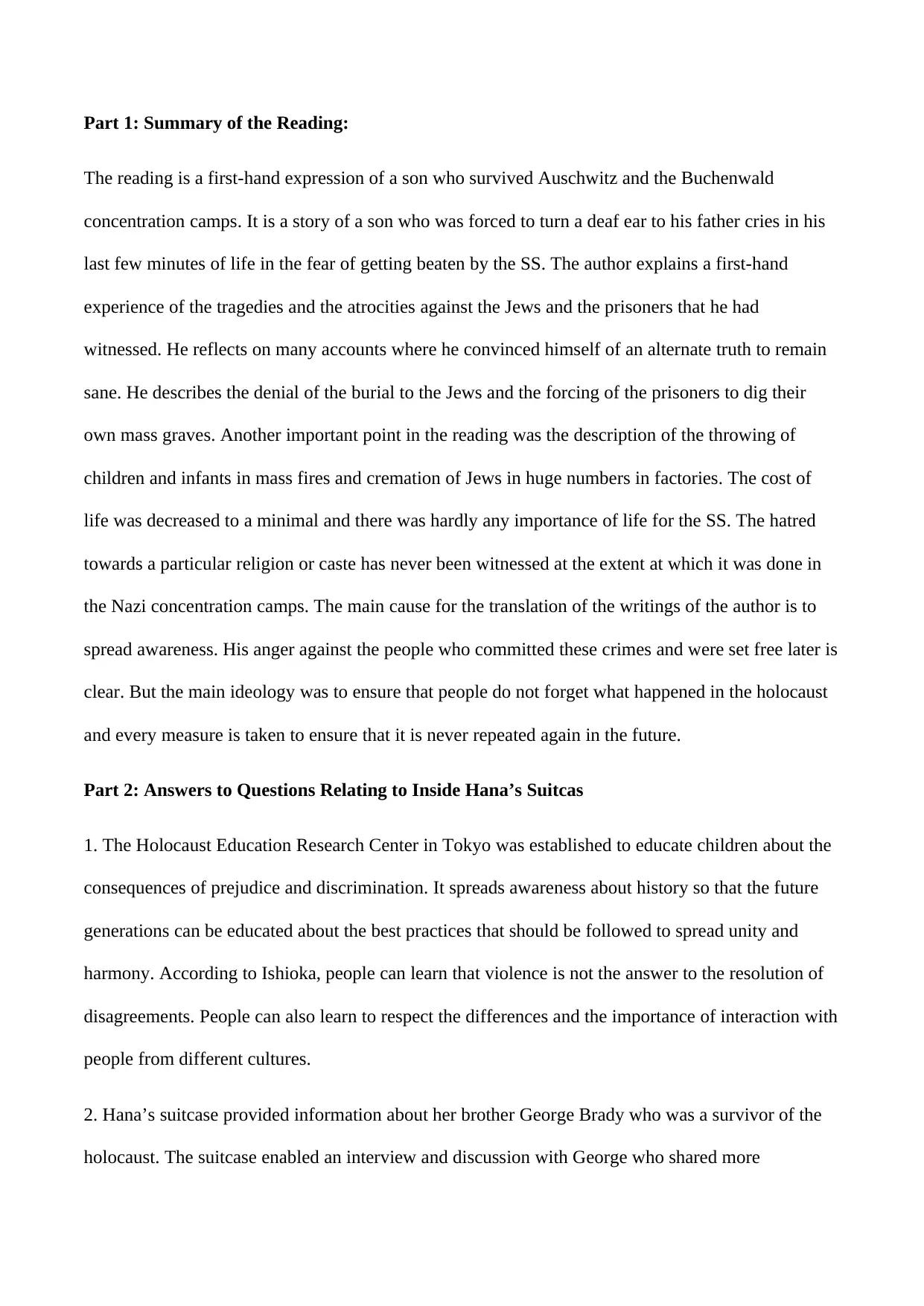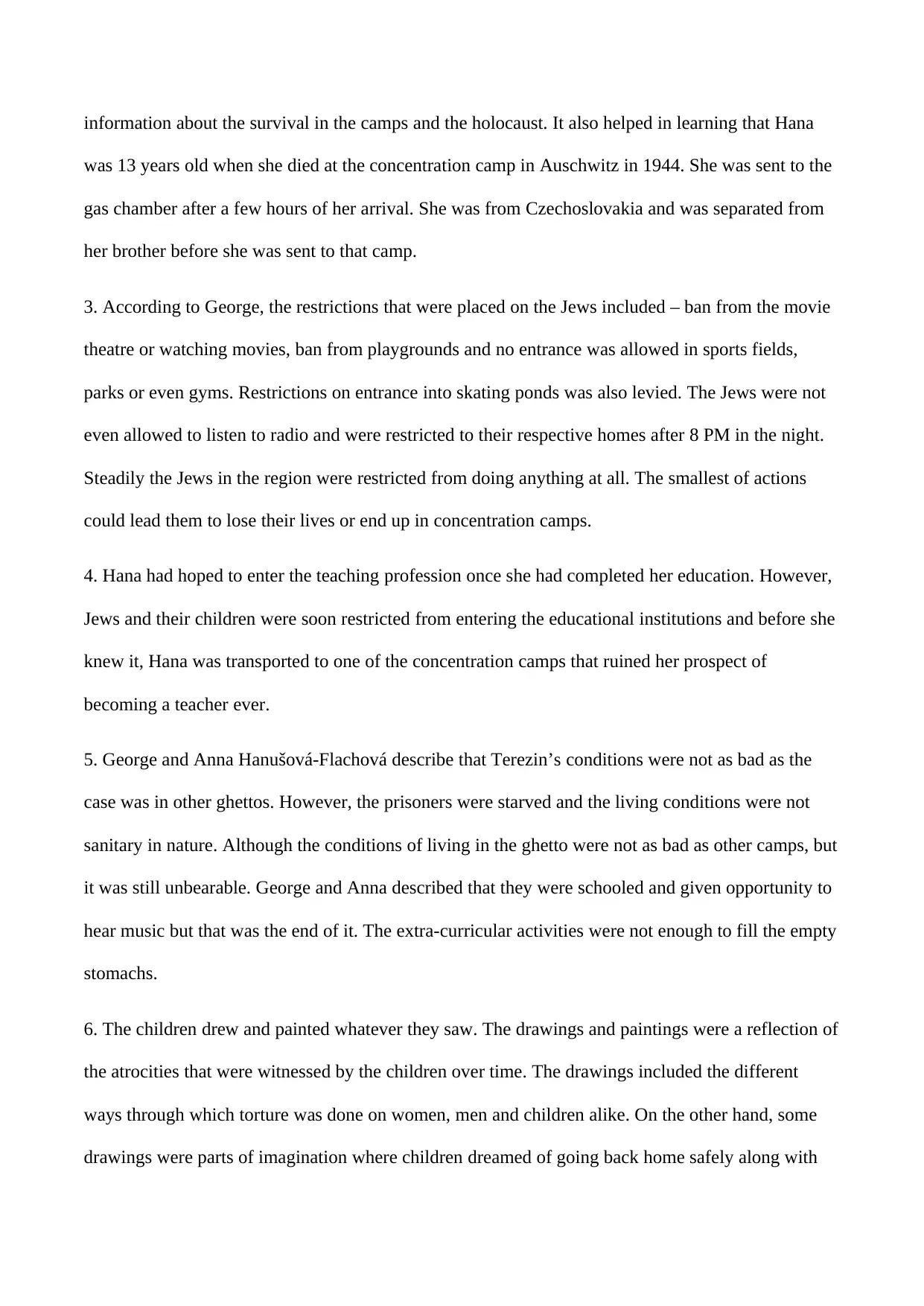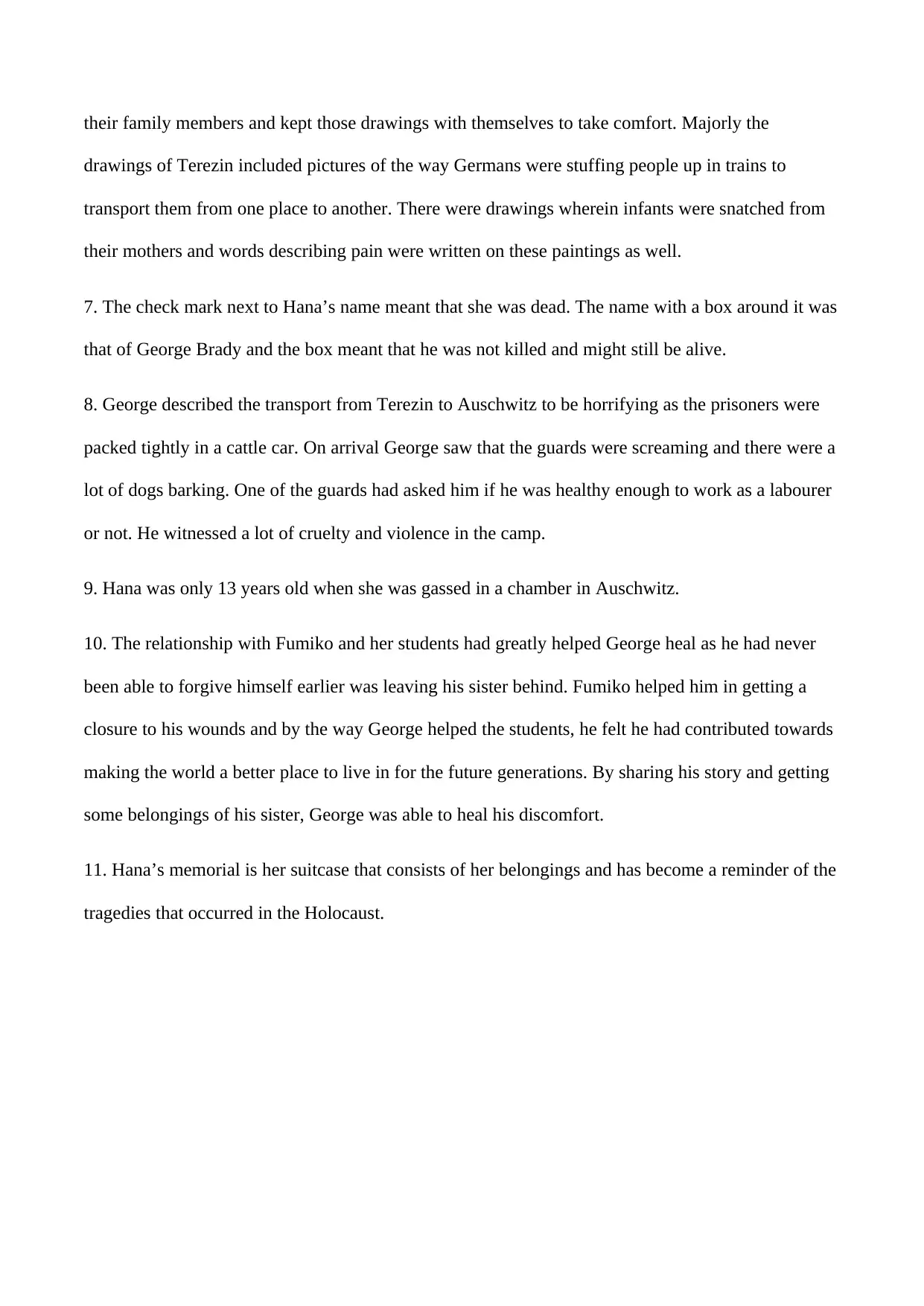University Holocaust History Assignment: Hana's Suitcase Analysis
VerifiedAdded on 2022/08/11
|3
|1113
|20
Homework Assignment
AI Summary
This assignment comprises two parts. Part 1 summarizes a reading that recounts a son's survival of Auschwitz and Buchenwald, detailing the atrocities against Jews and prisoners, the denial of burial, and the mass killings. The reading emphasizes the dehumanization and the importance of remembering the Holocaust to prevent its recurrence. Part 2 answers questions based on the documentary "Inside Hana's Suitcase." The questions address the establishment of the Holocaust Education Research Center in Tokyo, the information revealed by Hana's suitcase, restrictions placed on Jews, Hana's aspirations, conditions in Terezin, the children's artwork, the meaning of markings on transport lists, George Brady's transport experience, Hana's fate, the healing impact of Fumiko's relationship with George, and the significance of Hana's suitcase as a memorial. The assignment aims to promote awareness and understanding of the Holocaust's devastating impact.
1 out of 3





![[object Object]](/_next/static/media/star-bottom.7253800d.svg)